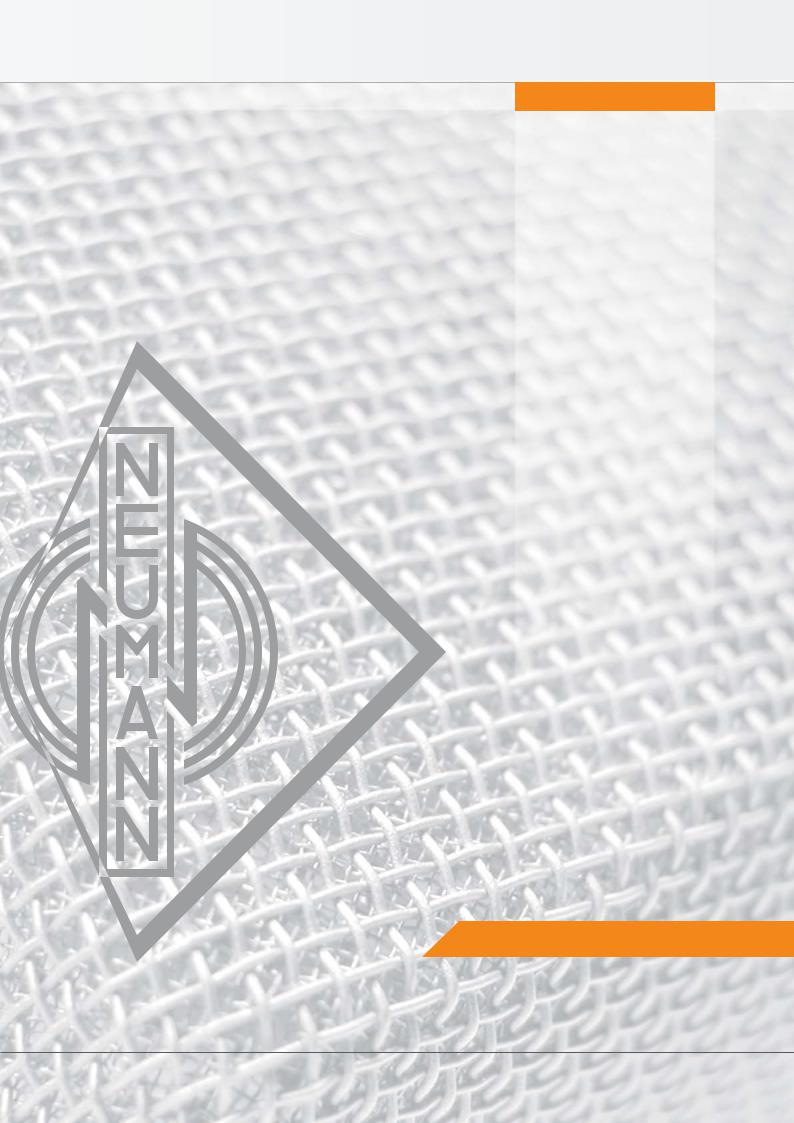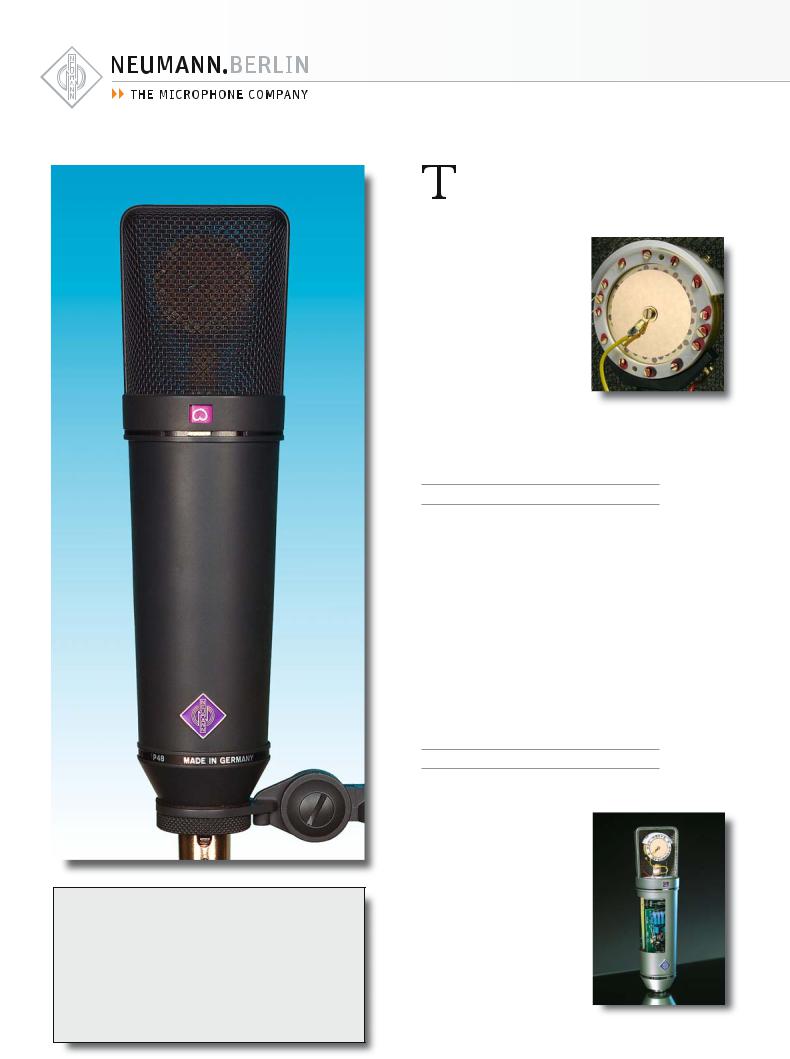Neumann U 87 Ai User Manual

Product Information
U 87 Ai
 Large Diaphragm
Large Diaphragm
Microphone
www.neumann.com
Georg Neumann GmbH • Ollenhauerstr. 98 • 13403 Berlin • Germany •Tel.: +49 (30) 41 77 24-0 • Fax: +49 (30) 41 77 24-50
E-Mail: headoffice@neumann.com, engineering@neumann.com, catalog-info@neumann.com • Web: www.neumann.com

The design of the microphone is a registered design of the Georg Neumann GmbH in certain countries.
Features
•Variable large diaphragm microphone
•Pressure-gradient transducer with double membrane capsule
•The studio microphone classic
•Three directional characteristics: omni, cardioid, figure-8
•Switchable low frequency roll-off
•Switchable 10 dB preattenuation
•Ideal as main and as support microphone in the most differing recording situations
U 87 is probably the best known and most widely used Neumann studio microphone. It is equipped with a
large dual-diaphragm capsule with three directional patterns: omnidirectional, cardioid and figure-8. These are selectable with a switch below the headgrille.
A 10 dB attenuation switch is located on the rear. It enables the microphone to handle sound pressure levels up to 127 dB without distortion.
Furthermore, the low fre-
quency response can be reduced to compensate for proximity effect.
Applications
The U 87 Ai condenser microphone is a large diaphragm microphone with three polar patterns and a unique frequency and transient response characteristic.
Users recognize the microphone immediately by its distinctive design. It is a good choice for most general purpose applications in studios, for broadcasting, film and television.
The U 87 Ai is used as a main microphone for orchestra recordings, as a spot mic for single instruments, and extensively as a vocal microphone for all types of music and speech.
Acoustic features
The U 87 Ai is addressed from the front, marked with the Neumann logo.
The frequency response of the cardioid and figure-8 directional characteristics are very flat for frontal sound incidence, even in the upper frequency range.
The microphone can be used very close to a sound source without the sound becoming unnaturally harsh.
By means of a high-pass filter interferences through subsonic
and low frequencies are reduced remarkably.
